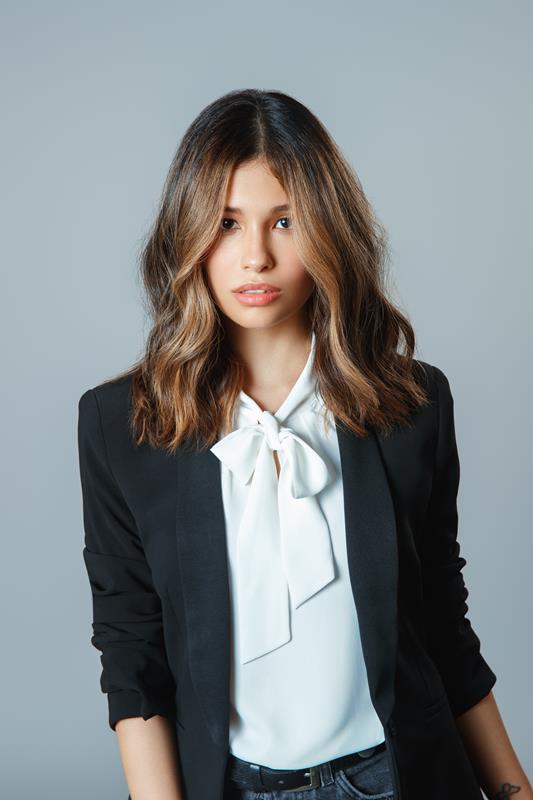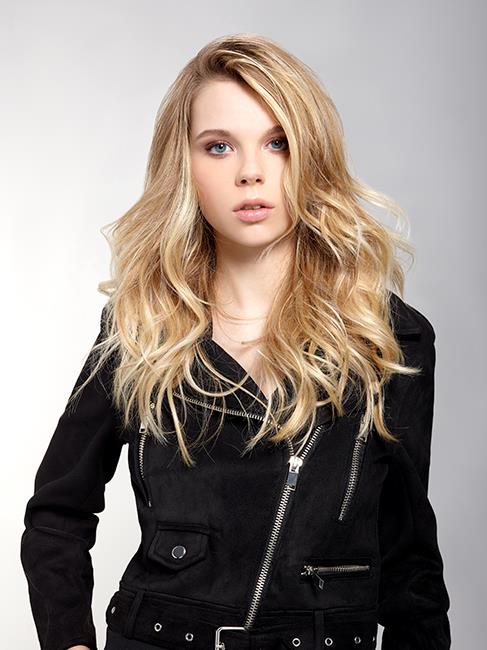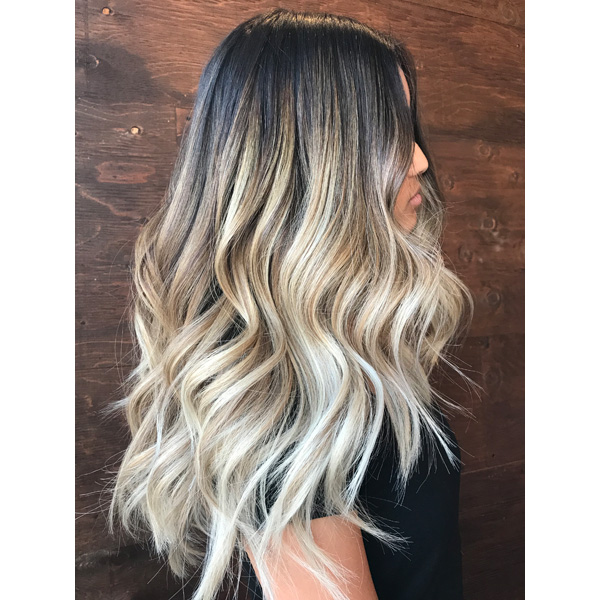Lighten things up with a balayage technique.
Balayage is a French word meaning ‘to sweep’ or ‘to paint’, pronounced BAH-LEE- AHGE. At James Bushell Hair Salon, this technique has become one of our most popular hair colour requests across all our locations. If you’re a colour newbie then balayage is for you!
What is Balayage Hair?
Hair lightener / color is literally “swept” across the hair to give it highlights that are a few shades lighter than your natural color. The hair at the bottom is often gradually lighter than the top of the hair, this adds dimension and movement to your overall look.
Balayage allows for a sun-kissed natural looking hair colour, with no harsh lines or obvious regrowth. As your hair grows out it only adds to the beauty of the balayage.
The principal idea being less is more when creating a natural, multi-tonal finish. If you want to refresh your hair colour but don’t want to go for a bold colour overhaul, balayage is great method. The colour created is totally bespoke to you and is placed to compliment each individual.
When Did Balayage Become so Popular?
Balayage hair was first noted by a famous salon in France in the 1970s. At the time, the hair industry standard was to dye hair using frosting caps and foils. Balayage was a revolutionary new technique, using strips of cotton to separate dyed hair from un-dyed hair, leading to that effortless, sun-kissed look. In the 90s, balayage hair became known to masses; with celebrities like Chriss Terigen, Jessica Alba and Kim Kardashian making it a popular do in more recent years.


How to do Balayage Technique
The Balayage pieces should be very close and soft at the root going into a thicker highlight at the ends of the hair. Balayage should be applied on the surface of the section and not saturated through the section until the very tips, otherwise you would have a streak of colour that isn’t very soft at all.
Due to the customised natural looking placement, balayage also allows for a softer grow out. This means that balayage requires far less maintenance than traditional colour, meaning you can go longer between appointments and enjoy the sun-kissed glow as it gets more and more beautiful.
You don’t have to have long locks for a balayage, whether your hair is curly and layered or straight and blunt cut, a sure way to show off your short locks is with a balayage.
However, just because balayage is low maintenance there is still things to keep in mind! Balayage usually requires lightening so keep in mind that this may take multiple trips to the salon depending on what colour you started with and what colour you would like to achieve at the end.
What is the Best Hair Colour for Balayage?
This isn’t just for blondes; this technique is actually used on all shades to add soft sun kissed dimension. Of course, there are variations in application which creates different looks, some technicians prefer freehand open-air technique whereas others may use foil as a divider. While traditional balayage features blonde highlights, you can totally experiment with other colours too! Some of our favourites at James Bushell salon include:
What is the Difference Between Balayage and Highlights?
Gone are the days of those old-fashioned foil highlights. Today, its all about looking sleek, natural, and effortless. Remember those “stripey” highlights that were popular in the early 2000s? Balayage does quite the opposite. Because balayage is painted by hand, the highlights are less consistent. This results in the softer progression of the dye, leaving a beautiful, natural multi-toned colour. This also ensures that the highlights work in tandem with your haircut and natural growth patterns.
What is ombré?
The term ombré means to “shade” or “shadow.” In the hair color world, ombré is a dramatic, two-toned hair color effect that is typically darker at the top and lighter on the bottom. Often the dark, top section is your natural hair color shade and the bottom section is lightened with hair lightener.
The ombre hairstyle can consist of any colour combination, from brown to red or pink to purple. It’s versatile, customisable and suitable for most long and medium hair lengths. Another hair colouring technique is “sombre”, which is a softer and more subtle version of ombre hair, with a less visible transition between the roots and end colours. Lastly, often confused with ombre hair, dip-dye colouring has little-to-no subtle gradation between the darker and lighter colours. Its name will help you remember the difference: dip-dye looks as if you’ve just dipped your hair into another colour.
Does Ombre & Balayage Damage Hair?
As with any hair colouring service, it is important to protect the hair fibre during and after the process. Our professional colouring techniques use the best quality products to prevent damage during the lightening process. Try our Olaplex treatment; a secret weapon that allows us to lighten your hair without damage from bleach based products. Olaplex works by reconnecting the disulphide sulphur bonds that get broken in the process of hair colouring and lightening, therefore leaving you with stronger, healthier looking hair and a longer-lasting colour.


